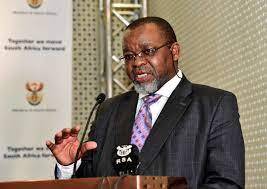This blog originally appeared on GES International’s website and has been republished following Sustainaltyics’ acquisition of the company on 9 January 2019. See the press release for more information.
During GES’ recent Emerging Markets Engagement trip to South Africa, we held several meetings with mining companies and, for the first time, with the South African government’s Department of Mineral Resources (DMR) and the Minerals Council South Africa, the mining industry’s trade body.
Why were meetings held with the aforementioned organisations? Well, South Africa’s mining industry is currently going through an interesting period. Following a change of Minister at the DMR in February 2018, the DMR relaunched the process for issuing a revised Mining Charter. The Mining Charter is a rulebook for the industry aimed at distributing country’s mineral wealth more equally amongst the citizens of South Africa, primarily those known as Historically Disadvantaged South Africans, i.e. those within the population who suffered most under the former apartheid regime.
The revised Mining Charter 3 was formerly introduced by the Mineral Resources Minister, Gwede Mantashe, in September 2018 and replaces the previously proposed, and very much maligned, 2017 Mining Charter 3 that was gazetted by the previous minister, Mosebenzi Zwane.
There are many differences between the two ministers and they reflect the way in which the charters have been introduced. Minister Zwane was a Zuma appointee, who had no previous experience or knowledge of the mining industry and who, within just a few weeks, gazetted Mining Charter 3 without any industry consultation. It led to court action and was eventually withdrawn without ever being effectively implemented.

The new Minister, Mantashe, was appointed by the new President, Cyril Ramaphosa, who both have experience in the mining industry. Although initially there seemed to be little difference between the two charters, there has been a major difference in the methods of their introduction. In 2018, the DMR willingly consulted with the industry and acted on its behalf, removing or amending numerous items that were problematical, for example: the compulsory dividend after 6 years and the recognition of existing mining rights with no requirement to increase existing Black Economic Empowerment (BEE) ownership to 30 per cent (from the previous 26 per cent).
The Minerals Council and individual mining companies have all welcomed the more consultative process and the DMR is quick to highlight the stability that the new charter offers to mining companies and external, international investors. It is worth highlighting that the DMR is keen to encourage foreign investment in the South African mining industry.
The companies still see some areas of concern, for example:
- Procurement, which, in simple terms, requires local companies to make up 80 per cent of a company’s procurement with an emphasis on “youth-owned” and “female-owned” The transition is currently scheduled to be undertaken over a five-year period. Many of the companies have questioned the feasibility of this requirement, when there is no local market for large CAPEX items, such as vehicles, or when there are no local suppliers within the locality of the operation. However, the DMR has stated that it currently only requires companies to make steps to show how they will increase the share of local ownership.
- A requirement to have 20 per cent black females throughout the management structure. Companies find it problematic to meet this requirement particularly at lower levels of management, for example: work supervisors, who work underground, primarily due to the nature of the working environment.
- Local ownership representation is also a requirement on both the board, and within the executive management, of the company. The concerns regarding this requirement include the process of how a representative will be chosen when there are multiple communities that need to be represented. Secondly, will the shareholder representatives have the necessary expertise to provide value within the executive?
But, for the first time, the DMR is developing implementation guidelines for the charter, which the Minerals Council is actively consulting on and providing input for. It is hoped that the guidelines will clarify many of the outstanding concerns.
This new period of cooperation is reflective of President Ramaphosa’s overall strategy of a “New Dawn” for South Africa and his attempts to create a more business-friendly environment in South Africa after years of corruption under the Zuma Presidency. Whether this appeals to the electorate will be discovered at the elections in March 2019.




